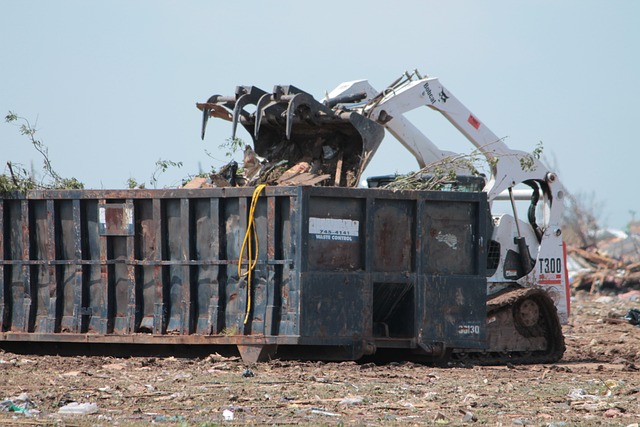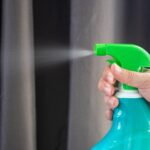
Unexpected disasters can strike at any time during the rough and tumble of running a business, causing chaos in their wake. From fires and floods to mold infestations and storms, the aftermath can be overwhelming. This guide walks through the crucial terrain of disaster cleanup and restoration services for businesses, illuminating the crucial elements that any manager or owner should know. As we explore the areas of rapid response, damage assessment, and restoration, we enable companies to not only weather the storm, but to thrive in it. This is more than just a guide—it is a lifesaver for companies looking to recover and bounce back after unanticipated disasters.
The unpredictability of disasters makes preparedness and a swift response crucial for businesses. Whether facing the aftermath of a fire that engulfs office spaces or dealing with the ravages of a flood that damages valuable equipment, disaster cleanup and restoration services are the unsung heroes that businesses desperately need. As we embark on this journey through disaster recovery, let us unravel the layers of expertise, efficiency, and compassion that define the realm of cleanup and restoration services for businesses.
See also our post on Practical Tips for Drying Out Water-Damaged Insulation in Commercial Properties
The Urgency of Rapid Response
Immediate Action
Rapid response is the cornerstone of effective disaster cleanup. Services need to be available 24/7, ensuring that professionals can swiftly assess the situation and take immediate action to mitigate further damage.
Emergency Contacts
Businesses should have emergency contacts for reputable cleanup and restoration services readily available. Having these contacts on hand expedites the response time, crucial for minimizing the impact of disasters.
Damage Control
The initial hours after a disaster are critical. Cleanup and restoration services focus on damage control, implementing measures to prevent secondary damage, such as mold growth or structural deterioration.
Coordination with Emergency Services
Cleanup services collaborate with emergency responders to ensure a seamless transition from the emergency phase to the cleanup and restoration process. This coordination is essential for an efficient and organized response.
Temporary Solutions
In cases where the business premises are uninhabitable, cleanup services may provide temporary solutions, such as setting up temporary offices or securing the premises to prevent unauthorized access.
Thorough Damage Assessment
Comprehensive Evaluation
Cleanup and restoration services conduct a thorough assessment of the damage. This evaluation includes inspecting structural integrity, identifying areas of contamination, and assessing the extent of water, fire, or mold damage.
Documentation
Detailed documentation is crucial for insurance claims and the overall recovery process. Cleanup services meticulously document the damage, capturing photographs and written descriptions to support insurance claims and restoration plans.
Prioritization of Tasks
Based on the assessment, cleanup services prioritize tasks. Immediate dangers, such as electrical hazards or structural instability, take precedence, followed by a strategic plan for addressing other aspects of the cleanup and restoration process.
Restoration Feasibility
During the assessment, restoration professionals evaluate the feasibility of restoring damaged items and structures. This includes determining salvageable items, assessing the integrity of building materials, and estimating the extent of necessary replacements.
Communication with Stakeholders
Open and clear communication with business owners, insurance representatives, and other stakeholders is paramount. Cleanup services provide transparent updates on the assessment findings, recommended actions, and projected timelines.
See also our post on Top Water Damage Restoration Procedure
Specialized Cleanup Techniques
Water Damage Restoration
In the aftermath of floods or water-related disasters, cleanup services employ specialized techniques for water extraction, drying, and dehumidification. This prevents further damage and inhibits the growth of mold.
Fire Damage Cleanup
After a fire, cleanup services remove debris, assess structural damage, and address smoke and soot residue. They use specialized equipment and cleaning agents to restore surfaces and belongings affected by fire damage.
Mold Remediation
Mold poses health risks and can spread rapidly after water damage. Cleanup services follow strict protocols for mold remediation, including containment, removal, and preventive measures to inhibit future mold growth.
Storm Damage Cleanup
Cleanup after storms involves clearing debris, securing damaged structures, and addressing water infiltration. Cleanup services are equipped to handle fallen trees, broken windows, and other storm-related damage.
Biohazard Cleanup
In situations involving biohazards, such as crime scenes or accidents, cleanup services follow strict safety protocols. They thoroughly clean and disinfect affected areas, ensuring the removal of hazardous materials.
Utilization of Advanced Equipment
Water Extraction Tools
Professional-grade water extraction tools, including pumps and vacuums, are used to swiftly remove water from affected areas. This aids in preventing further damage and accelerates the drying process.
Moisture Meters
Moisture meters are employed to measure the extent of moisture in building materials. This allows cleanup services to identify hidden pockets of water and ensure thorough drying to prevent mold growth.
Air Scrubbers
Air scrubbers are used to filter and purify indoor air during the cleanup process. They capture airborne particles and contaminants, improving air quality and creating a safer environment for restoration professionals and occupants.
Thermal Imaging Cameras
Thermal imaging cameras assist in identifying hidden water pockets behind walls or in ceilings. This technology enables cleanup services to pinpoint areas that may require additional attention during the drying process.
Dehumidifiers
Industrial-grade dehumidifiers play a crucial role in removing excess moisture from the air. This is essential for preventing mold growth and creating optimal conditions for the restoration of affected areas.
See also our post on Green Cleaning for Carpets: Earth-Friendly and Stain-Free
Collaboration with Insurance Providers
Claims Assistance
Cleanup and restoration services often collaborate with insurance providers to facilitate the claims process. They assist in documenting the damage, providing estimates, and ensuring that all relevant information is communicated to insurance representatives.
Cost Estimation
Accurate cost estimation is vital for insurance claims and budgeting. Cleanup services work closely with insurance adjusters to provide detailed cost breakdowns for the restoration process, including labor, materials, and equipment.
Policy Understanding
Cleanup professionals have a deep understanding of insurance policies related to disaster cleanup and restoration. This knowledge helps ensure that the services provided align with the coverage outlined in the business’s insurance policy.
Negotiation Support
In cases where there may be disputes or discrepancies in insurance coverage, cleanup services can provide support by presenting evidence, documentation, and expert opinions to facilitate fair and equitable negotiations.
Streamlined Communication
Efficient communication between cleanup services and insurance providers is essential for a smooth recovery process. This includes regular updates on the progress of cleanup efforts, changes in scope, and any challenges encountered during restoration.
Addressing Long-Term Impacts
Structural Repairs
Beyond cleanup, restoration services often include structural repairs. This may involve rebuilding damaged walls, replacing flooring, and restoring the overall integrity of the building to pre-disaster conditions.
Preventive Measures
Restoration professionals may recommend preventive measures to mitigate the risk of future disasters. This can include improving drainage systems, reinforcing structures, and implementing strategies to minimize potential hazards.
Business Continuity Planning
In collaboration with business owners, restoration services contribute to business continuity planning. This involves assessing vulnerabilities, developing contingency plans, and identifying strategies to ensure smoother recovery in the event of future disasters.
Post-Restoration Inspection
Following restoration, cleanup services conduct thorough inspections to ensure that all aspects of the restoration process meet quality standards. This includes assessing the functionality of restored systems and confirming the absence of hidden damage.
Documentation for Future Reference
Cleanup and restoration services provide comprehensive documentation of the entire process. This documentation serves as a valuable resource for future reference, including insurance renewals, property assessments, and business planning.
Conclusion
In the aftermath of a disaster, the role of cleanup and restoration services goes beyond restoring physical structures; it encompasses the restoration of hope, stability, and resilience for businesses. From rapid response and damage assessment to specialized cleanup techniques, advanced equipment utilization, collaboration with insurance providers, and addressing long-term impacts, this guide unravels the intricate web of services that form the backbone of disaster recovery for businesses. As we conclude this exploration, let us acknowledge the unsung heroes who stand ready to rebuild and restore, ensuring that businesses not only survive but emerge stronger from the challenges they face.






